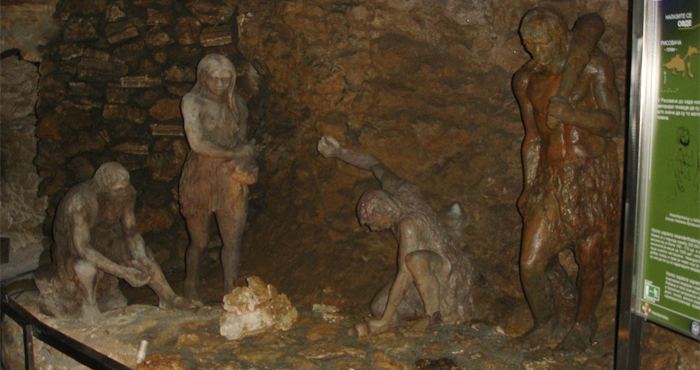Alternate name Pećina Risovača | Periods Palaeolithic Associated with Homo neanderthalensis | |
 | ||
Risovača Cave, (Serbian Cyrillic: Пећина Рисовача, Pećina Risovača) is situated at the very entrance of the town of Aranđelovac in central Serbia around 17 m (56 ft) above the Kubršnica river valley. It is one of the most important archaeological sites of the Palaeolithic in Serbia besides the Gradac Cave near Kragujevac. Its discovery confirmed the assumed existence of the Paleolithic culture south of the Sava-Danube line and provided new information on the life of prehistoric humans in Europe.
The site has been discovered around 1938 and archaeological excavations started in 1953. Fossils of 20 different mammals were discovered in the cave, that include Cave hyena, wolf, fox, wild horse, Cave bear, mammoth, Wooly rhinoceros, cave lion, leopard, wild boar, badger, mole rat, beaver, hare and steppe bison. The cave depth is approximately 187 m (614 ft) and its caverns, or "halls" are covered with minerals of various shapes and colors. Worked flint tools and bone artifacts of prehistoric human origin were discovered in sediments in a depth of 1 to 1.75 m (3.3 to 5.7 ft). These artifact assemblages are attributed to Neanderthal occupants during the end of the Middle Paleolithic period. Neanderthal fossil remains have so far not been found during excavations because any layers that might have held remains were already destroyed and removed during earlier stone quarrying.
Risovača Cave has been declared a national archaeological site of great importance in 1983 and put under legal protection by the Republic of Serbia. The cave remains a refuge for several endangered and protected species of bats.
